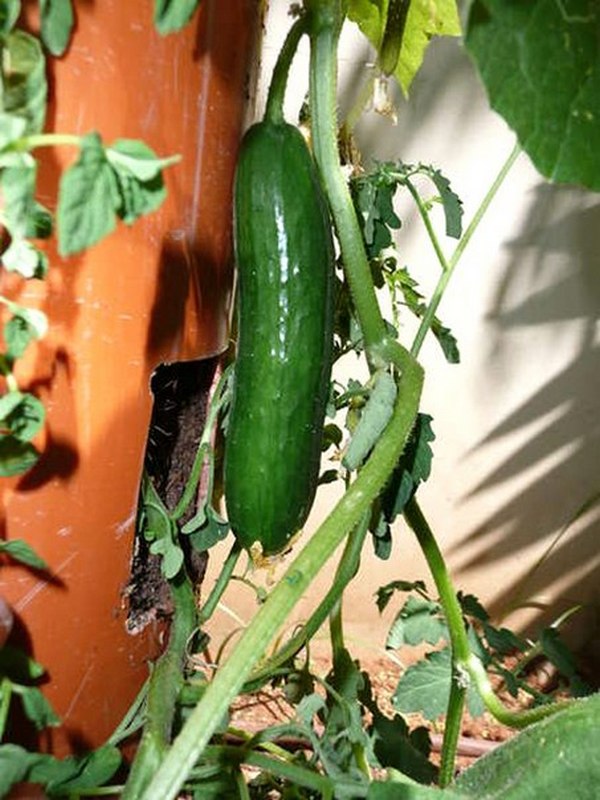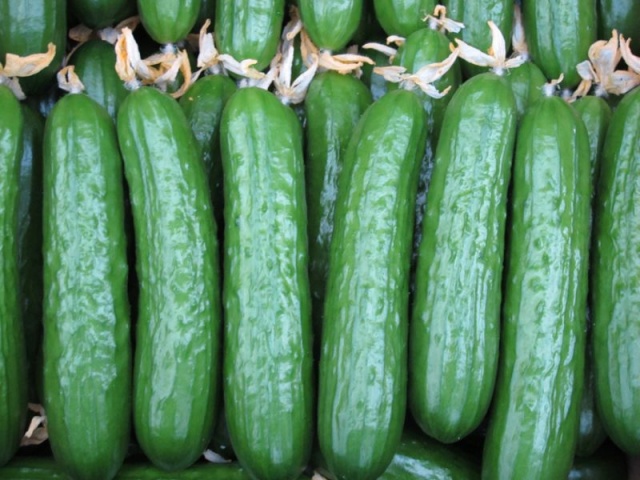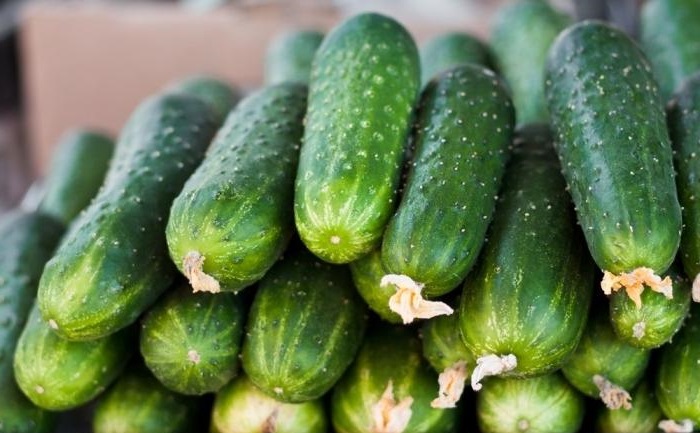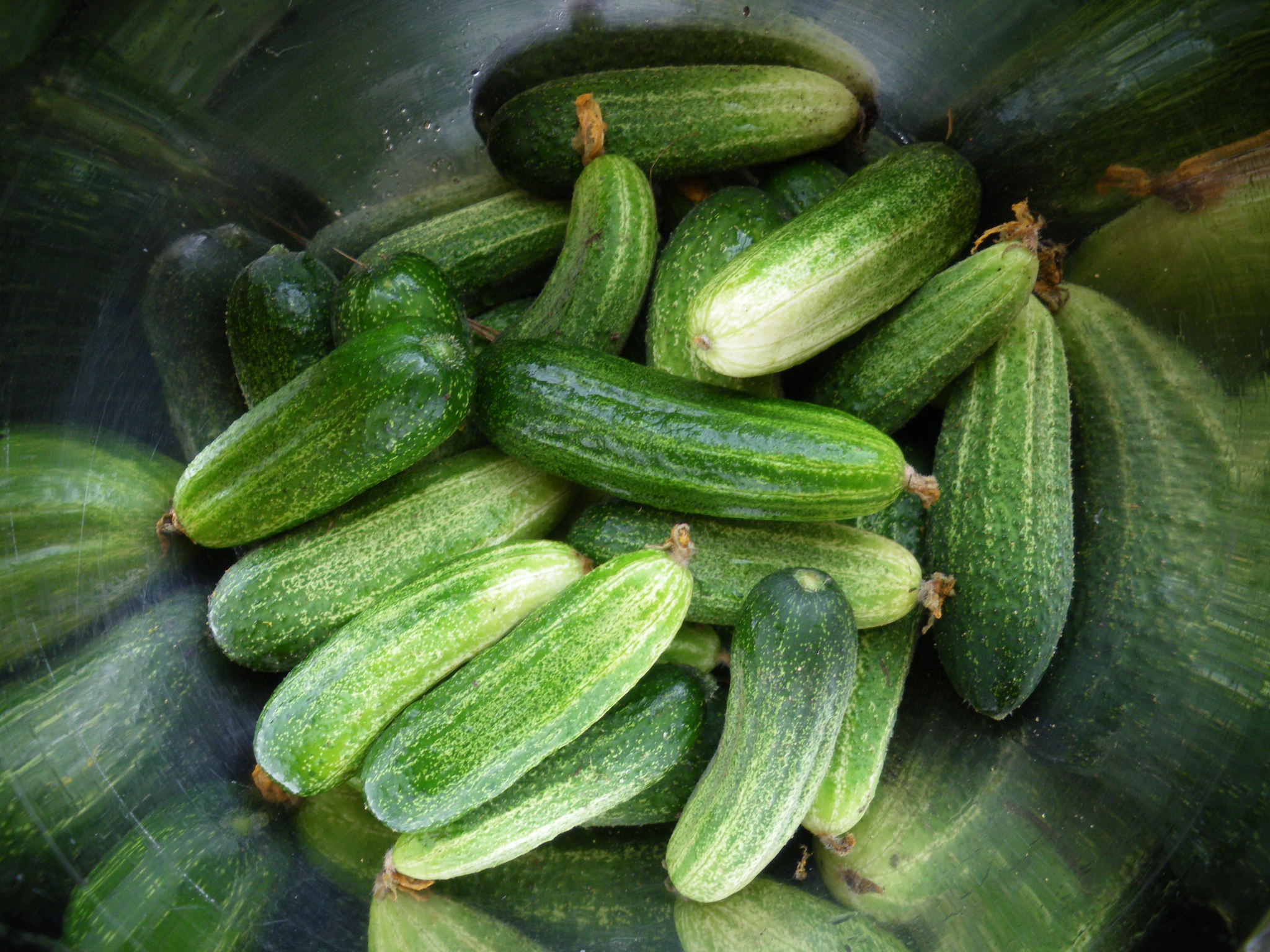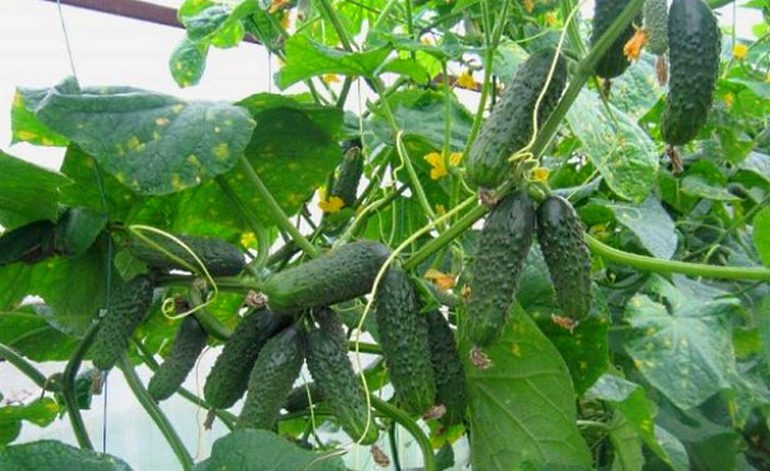Content:
Vertical planting of cucumbers is a real salvation for those who have a small plot of land or simply want to grow this crop with the greatest convenience. In greenhouses, as a rule, only vertical cultivation is used. However, in order not to encounter a number of problems in the process, you should familiarize yourself in advance and find out all the information about this method of planting, because the final quality and quantity of the crop depends on each stage.
You should know that among the main types of vertical beds there are also mobile ones. They are made in such a way that the structure can be moved to another place at any time.
Besides saving space and mobility, vertical beds have other benefits such as:
- there is no contact of cucumbers with the ground, and therefore no pollution;
- the vertical position protects the fruits from rotting and raids of rodents;
- the crop ripens evenly;
- the process of caring for the crop is simplified;
- many set up an automatic irrigation system for vertical beds;
- fertilizing the planting soil is much easier and safer for the fruits.
There are a lot of varieties of vertical beds that are suitable for growing crops in the open field. They differ in the nature and order of placement, in building materials. These beds can be hanging bottles, plastic bags, bags on walls, partitions or nets. These include a variety of trellises designed in the form of a tent. Alternatively, this method of growing takes the form of cut plastic pipes, wooden containers suspended from beams or crossbars.
Of all the options for building beds, you can easily choose such a vertical planting of cucumbers in open ground, which would be completely satisfactory and feasible with your own hands. You just need to decide which material will be more convenient to work with and follow the manufacturing instructions.
Cucumbers: vertical cultivation in tubes
You can grow cucumbers in a tube in two ways.
The first way assumes:
- Selection of a pipe (most often PVC is used) and its further perforation.
- If there is a desire to set up automatic watering, then a smaller tube is also inserted into a large pipe.
- The pipe is placed in the ground by a third, so that the building has good stability, and buried.
- The soil, previously mixed with seeds, is poured inside the pipe (you can plant seeds and then, through the holes, like cucumber seedlings).
A similar arrangement of pipes in a row can also serve as partitions for different areas of the site.
The second option for planting cucumbers in pvc pipes:
- In this method, the pipes are not placed vertically, but horizontally. That is, the pipes are allowed to be cut (or you can leave them as they are, but there will be a long bed).
- Each trim is cut into two halves along and the boundary walls are attached at the ends.
- The pipe sections that have turned into gutters are suspended from crossbars or branches, using fishing line, wire or ordinary rope for this. The length of the gutters is selected at will. Thus, they create both one and many tiers at once.
- Each gutter is filled with soil, into which the seedlings are later planted.
Vertical cultivation in a bucket
The topic of how to grow a cucumber in a bucket has been raised and raised by gardeners more than once.A fairly large number of summer residents want to experiment and grow the plant in this way, since there are a lot of positive reviews about it.
Vertical planting of cucumbers in buckets occurs in stages:
- The choice of capacity. The volume of the bucket for planting should be at least 5 liters so that the plant has enough room for roots and growth, and nothing interferes with loosening the soil.
- Holes are made at the bottom of the bucket so that water flows out.
- At the very bottom, drainage is laid (if there is no special one, then river stones, and even eggshells, will do).
- Since cucumbers love when there is a lot of fertilizer in the ground, then you need to fill the buckets with well-prepared soil. For this you can saturate the soil with humus, manure and wood ash. And be sure to add a complex fertilizer with nitrogen, potassium and phosphorus (proportions: 10 g of soil - 10 g of fertilizer).
- The finished earthen mixture is poured with lukewarm water so that it warms up and slightly compacted.
- 2-3 pieces are allocated for one bucket. cucumber seeds to have guaranteed germination. If all the seeds germinate, then the extra ones are removed.
- Cucumbers in a bucket need a temperature of 18 ° C and above. If the nights and days are cold, then many people cover the bucket with glass or plastic, thus creating additional warmth.
Vertical cultivation on trellises
The trellis method of vertical cultivation has proven itself very well for greenhouse conditions. In almost every greenhouse, gardeners use trellises. For arrangement, you can use step-by-step instructions:
- Install wooden or metal pillars so that the distance between them is about 1.5-2 m. They are needed as a support for the entire structure. Their height depends on the variety of cucumbers that are planned to be grown, but the depth should be up to 50 cm underground.
- Several horizontal rows of wire are stretched between the posts. However, if there is a possibility, it is better to make wooden beams, so you can not be afraid that the plant will destroy the structure with its weight.
- Twine is attached vertically to the crossbars or wire, so that the plant can even rise along it.
- After the structure is ready, you can plant seeds or seedlings. Plants are placed under each strip of twine in a hole.
When the seedlings gain enough height, they are tied to the lowest bar with flagella, and every 3-4 days they try to gently twine around the twine so that they begin their ascent.
Until the very moment of fruiting, caring for cucumbers on a trellis, even in open ground, even in greenhouses, consists of watering, feeding and loosening the soil. In addition, attention should be paid to the formation of a bush, without it the plant may not have time to grow, and the fruits may not ripen. In order for the bush to form successfully, excess stepsons and ovaries are removed at the bottom of the stem at the bases of each leaves. While the seedling is growing, side shoots are left, but they also require pinching so that they do not stretch too much.
Special attention should be paid to such material for trellis growing as a net. Grid growing is considered to be very efficient, low effort and inexpensive. The gardener is able to independently choose the slope and position of the net, and after use it can be easily twisted and left until next season.
The structure of the structures practically repeats the standard trellis structures.They find a net in any shop for gardeners, or make their own from fishing line.
In addition, a large number of summer residents not only dig in pillars and make crossbars to fix the material, but also prepare a frame (for example, A-shaped, purely vertical, inclined, arched). The manufacture of frames allows you to adjust the growth of cucumbers for yourself and the characteristics of the site. Such designs for cucumbers on the street can combine business with pleasure: together with a convenient way of growing a crop, it is possible to give more aesthetics and additional decor to the site.
It is very convenient to grow and care for cucumbers on a grid, and it is increasingly used by gardeners who have decided to plant cucumbers vertically.
Cucumber care with vertical cultivation
Despite the fact that the vertical method of growing cucumbers in the open field eliminates some of the hassle, maintenance is required no less than on conventional horizontal beds.
Before planting, make sure that the chosen place is protected from drafts and the ground is well warmed up. The soil requires additional preparation, regardless of the type of vertical cultivation. The land lends itself to careful cultivation in order to saturate with air. With excessive weight, peat or sawdust is introduced into it.
In addition to everything else, organic fertilizers are needed: about 6 kg of manure per 1 m² of the garden. Or add 1 tbsp to such an area. a spoonful of superphosphate and a glass of ash. Often gardeners strive to disinfect the soil in the spring by watering it with a strong hot solution of potassium permanganate.
And right before planting the seeds, a little dung or manure is added to each hole. Such organic fertilizers not only saturate the culture, but also provide additional heat, which is so necessary for cucumbers during growth.
As they germinate and develop, cucumbers need to form a bush, since female flower stalks are usually formed on lateral shoots. Pinching pushes the plant to form new lateral shoots, which subsequently ensures the formation of new fruits.
Throughout growth, moderate and regular watering is needed, since cucumber sprouts are very fond of moisture. With a lack of water, ripe fruits acquire bitterness in taste.
Mulching from time to time has a good effect on the development of the plant. If at the same time mowed grass or fallen leaves were used, then they will be able to protect the soil from drying out, and the need for weeding will be less. At the same time, regular fertilization is needed, since the first feeding during planting is not enough.
With the onset of the fruiting period, the cucumbers are harvested every 2 days, and it is not recommended to keep too large fruits for a long time on the stem. Even one overgrowth greatly depletes the bush and prevents the formation of new ovaries.
After the whole crop has been harvested, I prepare the land for rest. All stems and leaves are removed from the trellises / pipes / buckets. If they do not show signs of disease, then they can be identified in the compost heap, and if something like this has been noticed, then it is better to burn the plant.
If net, twine or wire was used on the trellis, then when removing them, you need to be careful and remove all plant residues. Only then can everything be neatly rolled up and stored until next season. All other materials (pegs, buckets, pipes, crossbars, etc.) are freed from the contents, wiped and sent to the shed until they are needed again.
After harvesting the fruits and before the onset of winter, the area after the cucumbers is dug up, the earth is loosened and all roots are removed. If possible, then you can prepare the soil for planting cucumbers in the next season. To do this, a certain plot or garden bed is mulched, not forgetting to dig it up with manure or other fertilizer before that. During the winter, such a land is perfectly prepared for new plantings.
Thus, the care of vertically grown cucumbers is fairly standard and not burdensome. The location of the beds allows you to comfortably harvest, and the structures themselves are very interesting and can revitalize the site, especially if it is small.
